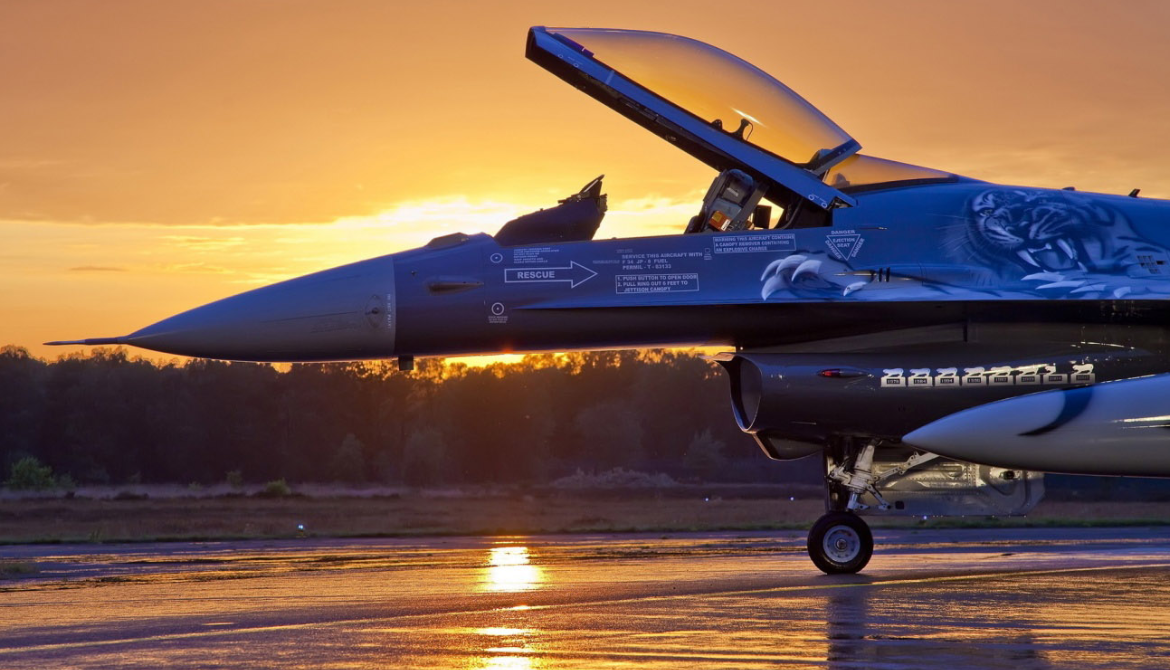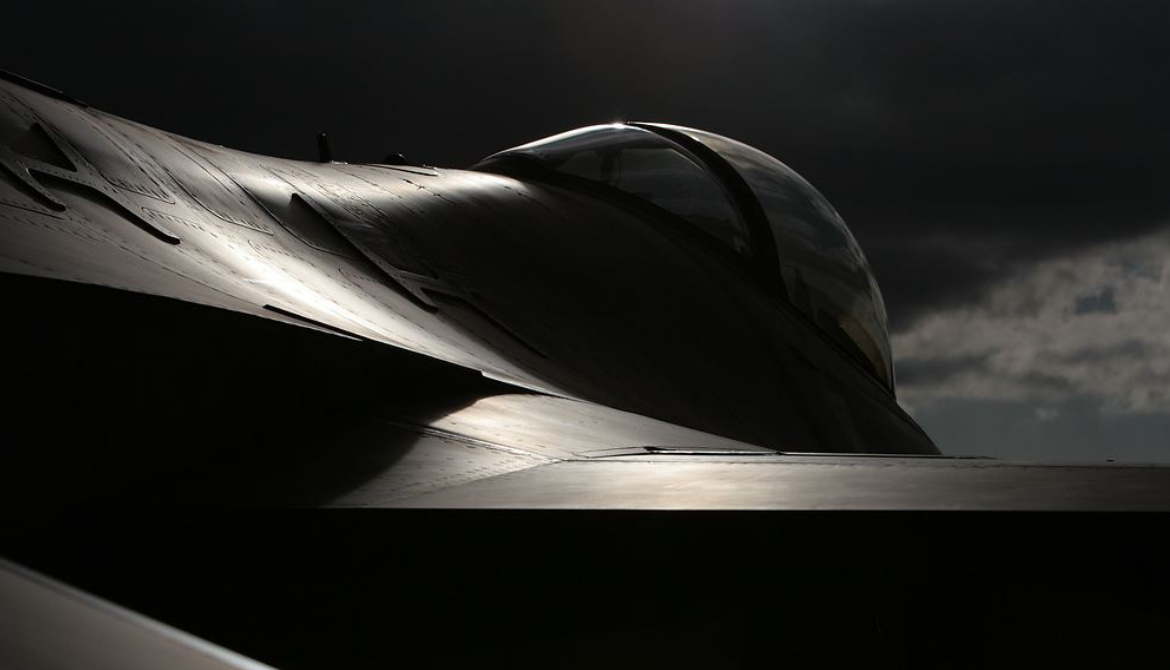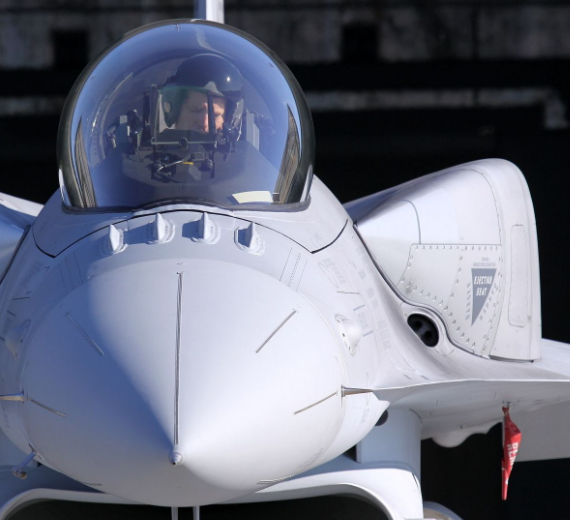Lockheed / GD
F-16 Fighting Falcon
Role Multirole fighter, air superiority fighter
National origin United States
Manufacturer
General Dynamics (1974–1993)
Lockheed Corporation (1993–1995)
Lockheed Martin (1995–present)
First flight
20 January 1974; 49 years ago (unplanned)
2 February 1974; 49 years ago (official)
Introduction 17 August 1978; 45 years ago
Status In service
Primary users United States Air Force
25 other users (see operators page)
Produced 1973–2017, 2019–present
Number built 4,604 (June 2018)
Variants IAI F-16 Soufa / General Dynamics X-62 VISTA
Developed into
Vought Model 1600
General Dynamics F-16XLMitsubishi F-2
.
History General Dynamics / Lockheed
F-16 Fighting Falcon Produced 1973–2017, 2019–present
Number built 4,604 (June 2018)
 The General Dynamics F-16 Fighting Falcon is an American single-engine supersonic multirole fighter aircraft originally developed by General Dynamics for the United States Air Force (USAF). Designed as an air superiority day fighter, it evolved into a successful all-weather multirole aircraft. Over 4,600 aircraft have been built since production was approved in 1976. Although no longer being purchased by the U.S. Air Force, improved versions are being built for export customers. In 1993, General Dynamics sold its aircraft manufacturing business to the Lockheed Corporation, which in turn became part of Lockheed Martin after a 1995 merger with Martin Marietta
The General Dynamics F-16 Fighting Falcon is an American single-engine supersonic multirole fighter aircraft originally developed by General Dynamics for the United States Air Force (USAF). Designed as an air superiority day fighter, it evolved into a successful all-weather multirole aircraft. Over 4,600 aircraft have been built since production was approved in 1976. Although no longer being purchased by the U.S. Air Force, improved versions are being built for export customers. In 1993, General Dynamics sold its aircraft manufacturing business to the Lockheed Corporation, which in turn became part of Lockheed Martin after a 1995 merger with Martin Marietta
The F-16 is a single-engine, highly maneuverable, supersonic, multirole tactical fighter aircraft. It is much smaller and lighter than its predecessors but uses advanced aerodynamics and avionics, including the first use of a relaxed static stability/fly-by-wire (RSS/FBW) flight control system, to achieve enhanced maneuver performance. Highly agile, the F-16 was the first fighter aircraft purpose-built to pull 9-g maneuvers and can reach a maximum speed of over Mach 2. Innovations include a frameless bubble canopy for better visibility, a side-mounted control stick, and a reclined seat to reduce g-force effects on the pilot. It is armed with an internal M61 Vulcan cannon in the left wing root and has multiple locations for mounting various missiles, bombs and pods. It has a thrust-to-weight ratio greater than one, providing power to climb and vertical acceleration.
The F-16 was designed to be relatively inexpensive to build and simpler to maintain than earlier-generation fighters. The airframe is built with about 80% aviation-grade aluminum alloys, 8% steel, 3% composites, and 1.5% titanium. The leading-edge flaps, stabilators, and ventral fins make use of bonded aluminum honeycomb structures and graphite epoxy lamination coatings. The number of lubrication points, fuel line connections, and replaceable modules is significantly lower than preceding fighters; 80% of the access panels can be accessed without stands. The air intake was placed so it was rearward of the nose but forward enough to minimize air flow losses and reduce aerodynamic drag used in combat in 2018 by the Israeli Air Force ..0
KmCeiling
0
KmCombat RANGE
0
MachAircraft Speed
0
Max Crew
Photo Gallery
General Dynamics / Lockheed
F-16 Fighting Falcon Produced 1973–2017, 2019–present
Number built 4,604 (June 2018)


Lockheed / Martin aircraft
F-16 block 52+ MLU Fighting Falcon
Produced 1973–2017, 2019–present
Number built 4,604 (June 2018)
General Info
-
- Crew: 1
- Length: 49 ft 5 in (15.06 m)
- Wingspan: 32 ft 8 in (9.96 m)
- Height: 16 ft (4.9 m)
- Wing area: 300 sq ft (28 m2)
Powerplant
-
- Empty weight: 18,900 lb (8,573 kg)
- Gross weight: 26,500 lb (12,020 kg)
- Max takeoff weight: (19,187 kg)
- Fuel capacity: (3,200 kg) internal
-
Powerplant: 1 × General Electric F110-GE-129 for Block 50 aircraft , 17,155 lbf (76.31 kN) thrust dry, 29,500 lbf (131 kN) with afterburner
(1 × Pratt & Whitney F100-PW-229 for Block 52 aircraft, 17,800 lbf (79 kN) thrust dry and 29,160 lbf (129.7 kN) with afterburner.
Performance
- Maximum speed: Mach 2.05, 1,176 kn (1,353 mph; 2,178 km/h) at 40,000 feet, clean
- Mach 1.2, 800 kn (921 mph; 1,482 km/h) at sea level
- Combat range: 295 nmi (339 mi, 546 km) on a hi-lo-hi mission with 4 × 1,000 lb (454 kg) bombs
- Ferry range: 2,277 nmi (2,620 mi, 4,217 km) with drop tanks
- Service ceiling: (15,000 m)
- g limits: +9.0
- Roll rate: 324°/s
Armament
- Guns: 1 × 20 mm (0.787 in) M61A1 Vulcan 6-barrel rotary cannon, 511 rounds
- Hardpoints: 2 × wing-tip air-to-air missile launch rails, 6 × under-wing, and 3 × under-fuselage pylon (2 of 3 for sensors) stations with a capacity of up to 17,000 lb (7,700 kg) of stores
.
Links to Youtube & Others
Ready then, ready now, ahead of ready for what’s to come. Transforming 4th Generation for the next generation with the newest and most advanced F-16. Meet the Block 70/72 Fighting Falcon.
Lockheed/Martin
F-35A/B/C Lightning II
On May 2, 2011, while on patrol near the Nuristan province of Afghanistan, U. S. Air Force Maj. John Caldwell peered out from the bubbled canopy of his F-16 and saw nothing but desert.
Youtube Link
Lockheed Martin delivered the 4,500th F-16 Fighting Falcon in March 2012. Follow this aircraft's amazing legacy.













